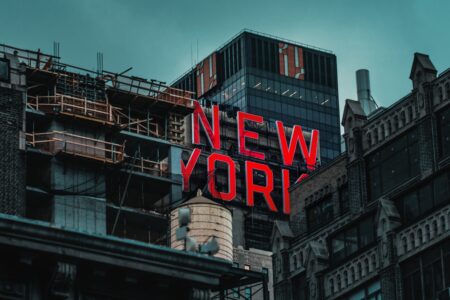In a recent, hard-hitting op-ed piece, Alexandros Washburn, a former Chief Urban Designer for the City of New York (2007-14), called for scrapping former Governor Cuomo’s Empire Station Complex proposal. The article appeared in Crain’s New York Business here.
Washburn cited what many of us have been saying for some time in slightly different words, namely, that the original Pennsylvania Station (1911-1966) was not destroyed—it was decapitated. He writes:
“Gone are the soaring waiting rooms and the rows of columns, but all the guts remain. The entire foundation, every column supporting every piece of Penn Station, is still there, as is the configuration of the tracks. Most of the hard work of building a train station is done. In many ways, you could argue that the easiest thing to do is to rebuild the station because you could do it without altering or affecting operations”.
Good point, Alexandros. The rebuilding of the original station may well be the easiest, most cost-effective way to fix the horrendous mess that is the current Penn Station/Madison Square Garden complex. But so many of our architects remain indissolubly wedded to some strange orthodoxy as to historical buildings. As Washburn says, the greatest obstacle to doing the right thing at this critical site may well be:
“the innate resistance in the collective psyche of the world’s architects to replicating anything from the past”.
Among them, Washburn says:
“the idea that we must always move forward persists. But there are many hugely successful examples of modern architecture that harken back or even directly replicate wonderful buildings that were lost or damaged”.
Sam Turvey, Chairperson of ReThinkNYC and member of the Empire Station Coalition, applauds Washburn’s candor and encourages others to do the same:
“The proposed monolithic Empire Station Complex will freeze frame in concrete some of the worst design elements we have seen in an urban project in some time. It is for widgets, not humans. Alexandros is right to point this out and to also flag the bias in the architectural community that ultimately presumes that end-users should not have a say and that historical reconstructions are automatically disqualified”.
“This is nonsense. The architectural community should do right by McKim, Mead & White and rebuild their tremendous gift to architecture, to the civic culture of New York and, indeed, to the world. The White House was burned down to the ground in 1812, and we rebuilt it. The demolition of Penn Station started in 1963; we should rebuild it. Doing so will greatly enhance New York’s reputation for resilience in the face of adversity and for cultural leadership at home and abroad. Our civic pride could use this shot-in-the-arm especially now, after the trying times of the pandemic”.
Turvey went on to say:
“My differences with Alexandros are slight, and have to do with our ability to faithfully replicate the original design. Certainly, we can replicate the facades and much of the stonework. Milford granite quarries, like Fletcher Granite Curb in Westford Massachusetts, stand at the ready to furnish the same stone as used in the original. Computer-generated design and panelization techniques would make a reconstruction of the orignal station much more affordable than many realize. There are many who will claim to be proffering faithful rebuilds but proffer much weaker intellectually dishonest designs with little bona fides for straying from the original. That is not something we want to see happen.”
“We believe the original Penn Station could be rebuilt for appreciably less than the Oculus PATH station which cost $4.5 billion dollars and serves approximately one-tenth of the ridership at Penn Station. We do, however, agree with Alexandros that modifications to the original design are needed — for present capacity needs, technologies, circulation patterns, and changes to the orientation of the station (e.g., Eighth Avenue should become more of an entrance than the station’s backdoor given all the activity happening to the west), among other things. We have projected many such changes in our proposed designs”.
“Our differences with Alexandros are minor. More people need to do what he did — get off the sidelines and weigh in. The same can be said in a different, but related, vein of former MTA planner and assistant director Peter Derrick whose through running ideas were stymied by commuter rail operator and Amtrak in-fighting which he called out in a recent Bond Buyer piece by Paul Burton. If we, if everyone, does not speak up, the busiest train station in the Western Hemisphere will remain a dank, lightless rabbit’s warren in the basement of a hockey rink and the intransigeants win again with obstinance not anything approaching excellence or even mediocrity”.
“To channel Fran Lebowitz, do not just pretend this is a city, pretend it is New York City”.
“New York City’s points of entry should be worthy of us. The Empire Station Complex falls pathetically and inexplicably short of this.”
.
By ReThinkNYC








